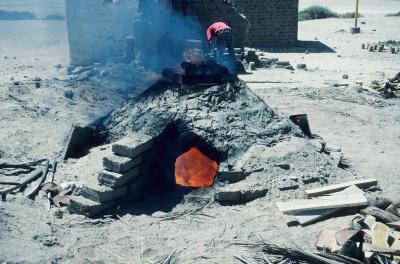I travelled "across the water" on Monday 11th October with fellow SACE postgrad Claire Ollett to the
Wirral Ancient Egypt Society (WAES), an Egyptology society based at
Mayer Hall, Lower Bebington, for a lecture presented by
Dr. Paul Nicholson, Senior Lecturer in Archaeology at the University of Cardiff, on the Glass and Faience Industries at Amarna. We had a very warm welcome - the society members were very interested in our studies and I would certainly recommend their lecture series to anyone in the area.
Dr. Nicholson gave a fascinating lecture on his work at Amarna, carried out on behalf of the
Egypt Exploration Society, which focused on the idea of an 'industrial estate' of faience, glass and pottery production at the site. It was interesting to hear more about the work of
W. M. F. Petrie at Amarna (1891-2); whose interest in the 'glazing technologies' at the site was illustrated by an image of one of his notebooks, which contained a reference to over 1000 clay moulds used in the production of faience amulets that he discovered during his excavations.
 |
Blue glass produced from
Dr. Nicholson's Experimental Kiln at Amarna
(http://www.cardiff.ac.uk/hisar/people/pn/r) |
The area of Dr. Nicholson's research focus is O.45.1, which has preserved an industrial area consisting of two kilns for faience or pottery production, and a 'potting area' identifiable from the presence of fired bricks, unfired pottery and a trampling pit. Interestingly, these fired bricks were re-used from an earlier kiln and would originally have been covered with a solution of mud and water to increase the firing temperature inside the kiln.
The history of glassmaking/working in New Kingdom Egypt also featured in the lecture. Debate continues as to whether the Egyptians actually produced their own glass, or whether they had raw glass ingots imported from other glass-producing regions in the Near East which they worked into objects. Dr. Nicholson argues in favour of the local glass production, which was also Petrie's opinion.
 |
| The Experimental Kiln during Firing at Amarna (http://www.cardiff.ac.uk/hisar/people/pn) |
| |
|
Dr. Nicholson described and illustrated an experimental kiln that his team constructed at Amarna with firing features as close as possible to the ancient kilns. The structure was able to produce a firing temperature of 1100°C, which was encouraged by the north wind and a north-facing stoke hole. The team were able to produce blue glass in the kiln in one step without a fritting stage, which suggests that some glass may well have been produced in Egypt. Glass, faience and pottery production, i.e. high temperature objects, would have been controlled by the state at Amarna, and thus glass and faience especially would have been high-status products.
The lecture was followed as always with tea and a separate questions session. Dr. Nicholson presented a series of interesting new ideas, which were received with enthusiasm by the audience. Overall it was a thoroughly good lecture, and I would certainly recommend a visit to the WAES for an engaging and entertaining afternoon.
The Society meet on the second Monday of every month at Mayer Hall, so do check their
events programme for a list of upcoming lectures.
 For this week's "Website of the Week", I recommend a visit to the homepage of the Iconic Guides. This project was spearheaded by Dr. Benedict Davies, who holds a Ph.D in Egyptology and is a successful freelance author of several Egyptological volumes.
For this week's "Website of the Week", I recommend a visit to the homepage of the Iconic Guides. This project was spearheaded by Dr. Benedict Davies, who holds a Ph.D in Egyptology and is a successful freelance author of several Egyptological volumes. 






















